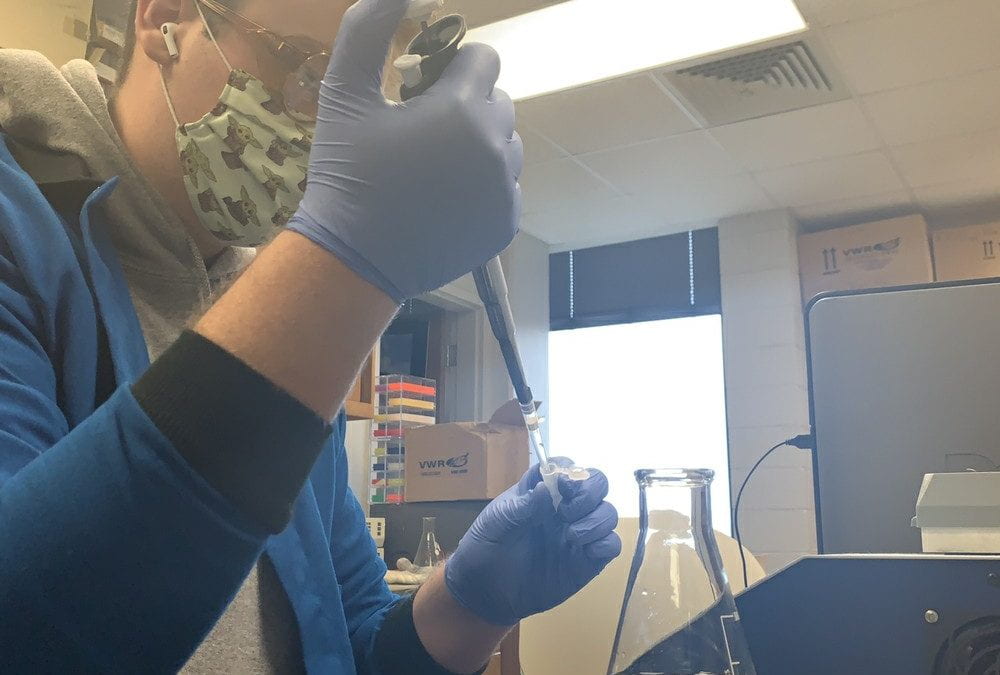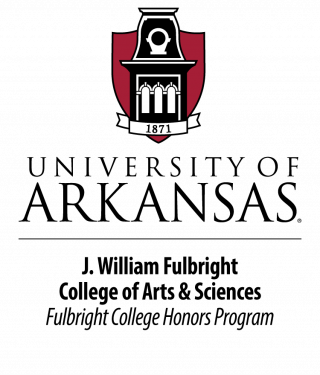By Miller Bacon
 Despite what you may have heard in high school, there is so much more to research than just lab coats and test tubes. From the humanities to social sciences, and even to the arts, professors in every department on campus are conducting research to answer fascinating questions, and all of them want undergraduate students to work with. Because of this, the beginning of any student’s research journey is finding a project that interests them. You can do this by researching your favorite teachers, going to your department’s website, or even reading publications in the library, all of which can give you the information that you need to find the perfect research project. In my own research journey, it began with a conversation with one of my favorite chemistry professors.
Despite what you may have heard in high school, there is so much more to research than just lab coats and test tubes. From the humanities to social sciences, and even to the arts, professors in every department on campus are conducting research to answer fascinating questions, and all of them want undergraduate students to work with. Because of this, the beginning of any student’s research journey is finding a project that interests them. You can do this by researching your favorite teachers, going to your department’s website, or even reading publications in the library, all of which can give you the information that you need to find the perfect research project. In my own research journey, it began with a conversation with one of my favorite chemistry professors.
When I first arrived at the university, I met my future research mentor when he randomly entered my freshman chemistry class. Dr. Stites—at the time the chemistry department head—was fascinating to listen to as he discussed the fields of forensic and biological chemistry. When I returned to my dorm room at the end of the day, I pulled out my laptop and began a search of his past publications and ongoing projects. After a while spent reading, I knew that Dr. Stites was who I wanted to work with.
This is my first takeaway for anyone who is looking for their future mentor—do your research! It was not until after I thoroughly researched Dr. Stites and his work that I actually set about reaching out to him. I first contacted him through email, and it was then that I first mentioned to him my interest in research. I did not ask him about joining his project, however, but instead simply asked if we could discuss his work so I could learn more about it. When he agreed, I had taken the first step towards joining his lab.
 Before the meeting, I did an in-depth read of his past published works and current project descriptions so that I could come up with a list of questions for the meeting. These questions served me well, as they helped me show Dr. Stites my passion for his research. As we talked, I continued to learn about his projects, and by the end of the meeting I knew exactly which one I wanted to join. This is my second takeaway—ask specific questions, both to show your interest and to learn more about the research you will be participating in.
Before the meeting, I did an in-depth read of his past published works and current project descriptions so that I could come up with a list of questions for the meeting. These questions served me well, as they helped me show Dr. Stites my passion for his research. As we talked, I continued to learn about his projects, and by the end of the meeting I knew exactly which one I wanted to join. This is my second takeaway—ask specific questions, both to show your interest and to learn more about the research you will be participating in.
While I knew which project I wanted to join, I did not mention this to Dr. Stites until after the meeting. This is my third takeaway—if you are able, establish a rapport with your potential mentor before asking to join their research. I waited a few days and then reached out, asking if there were any open positions on his forensic chemistry project studying the addition of amines to cyanoacrylate deposition and its effect on fingerprint analysis (basically adding amines to superglue to try and make clearer fingerprints). He responded, asking if I would come in to officially interview for the position. After a few questions regarding the hours I would be willing to work and my interest in the project, I was allowed into the lab.
Everyday since this initial interview has been as exciting as I would have dreamed. When I enter the lab, put on my lab coat, and begin to do my work, I am filled with joy and curiosity. Over the past two years, I have been given more research responsibilities, and have even earned myself a position on the author’s line once the paper is published. Over the time I have worked on the project, I have become more and more sure of my decision, and know confidently that I made the right choice when I emailed Dr. Stites two years ago.


